The Google Pixel 3 Review: The Ultimate Camera Test
by Andrei Frumusanu on November 2, 2018 11:00 AM EST- Posted in
- Smartphones
- camera
- Mobile
- Pixel
- Snapdragon 845
- Pixel 3
Display Measurement
The Pixel 3’s screen is an extremely important aspect of the phone, not just because it’s the centre-piece of a device, but also because Google’s choice of panel manufacturer. Last year’s Pixel 2 XL suffered from a compromising display made by LG, which in particular had very large issues regarding gamma as well as black clipping at low brightness levels.
This year, Google opted to swap display suppliers around, with the small Pixel 3 now featuring an LG panel while the bigger Pixel 3 XL uses a Samsung unit. Again unfortunately we don’t have the 3 XL at hand, but we can investigate the Pixel 3’s LG panel and make comparisons on the issue points that plagued last year’s 2 XL.
One thing of note that is a first for Google is the introduction of different display colour modes. This was introduced in Android P / 9 and was backported to last year’s Pixel 2. Google now offers a “Natural” mode which represents accurate sRGB and Display P3 D65 targets, a “Boosted” mode which increases the colour saturations, as well as an “Adaptive” mode which is a bit of a mess but shouldn’t be of any concern to people who don’t care too much about colour accuracy.
As always, we thank X-Rite and SpecraCal, as measurements are performed with an X-Rite i1Pro 2 spectrophotometer, with the exception of black levels which are measured with an i1Display Pro colorimeter. Data is collected and examined using SpectraCal's CalMAN software.
Starting off with the greyscale measurements, I decided to switch over to full scale 256 level measurements to better showcase some of the characteristics of the panels, we’ll get back to this at the end of this page.
In “Natural mode”, the Pixel 3 is very accurate and manages to showcase a DeltaE2000 of 1.36, along with an average colour temperature of 6576K, which is very near the target D65 illuminant.
The phone has a maximum brightness of 407 nits – which is average of an OLED, as recent generation Apple and Samsung devices reach levels above 600nits. Google isn’t employing any auto-brightness boost mode, so sunlight legibility might be less than that of other devices, however I wasn’t able to test this directly in the cloudy weather.
Gamma came in at 2.18 – however looking at the curve it’s notable that for most levels it’s at around 2.3, and the average is brought down by being too bright in the last 5% of levels.
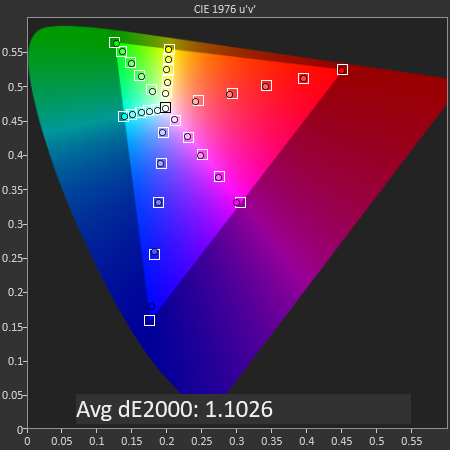
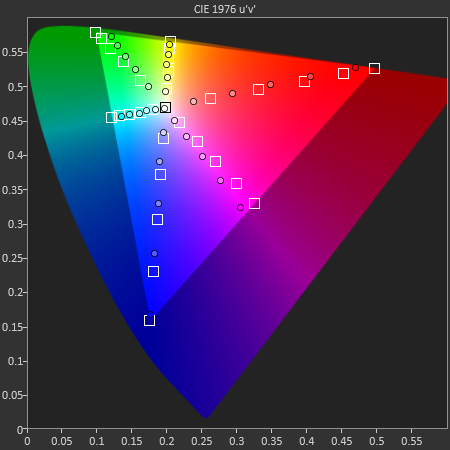 SpectraCal CalMAN
SpectraCal CalMAN
sRGB in "Natural" and in "Boosted" (Against Display P3 Gamut)
When in “Natural” mode, all non-colour managed content targets the sRGB colour-space. Here the Pixel 3’s screen is very accurate with a dE2000 of 1.1, among the best in terms of colour accuracy.
Selecting the “Boosted” mode linearly increases the saturations within the sRGB space – the resulting gamut doesn’t adhere to any standard. The adaptive mode is a complete mess in terms of colour gamut as well as targeting a high gamma of 2.5 – we’ll get back to that into a bit.
Google introduced OS level colour management support in Android 8, however the implementation on the Pixel 2 wasn’t finalised and there wasn’t any application support as of last year. With the Pixel 3 I had hoped that Google would progress on this, however to my great disappointment I didn’t find a single out-of-the box application which would support wide-gamut content.
To demonstrate the issue, you see the Pixel 2, Pixel 3 and an iPhone XS showcasing sRGB and Display P3 images alongside each other in the above photo. By default on Chrome, both sRGB and P3 images are equal, while the XS correctly showcases the higher saturation of the full-level red of the P3 image.
There is one way to bypass this issue, and that is to explicitly tell Chrome to override the default provided system colour profile and just tell it the display is Display P3. This enables colour management in the app, and short of writing a custom application, is the only way to get wide colour gamut content to work on the Pixel 3.
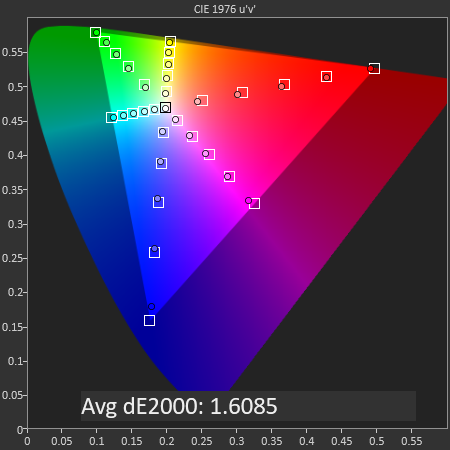
 SpectraCal CalMAN
SpectraCal CalMAN
Display P3 in "Natural" and in "Boosted"
Now one of the big questions I’ve had this year is how the CMS would interact with the actual display colour profiles in the settings. Fortunately, it’s pretty straightforward: The “Natural” mode isn’t per se a colour gamut selection, is just an actual category which has both accurate sRGB and P3 display modes via the CMS.
Testing out the Display P3 targets, the Pixel 3 showcases a good dE2000 result of 1.6. The display didn’t score better because seemingly the blue spectrum isn’t fully hitting the target saturations, something that also happened in the sRGB targets. Testing the P3 targets in the “Boosted” mode, we see again what is happening is that this mode just linearly increases the saturations. The blues are nearer to the P3 targets but all other colours overshoot the P3 target now.

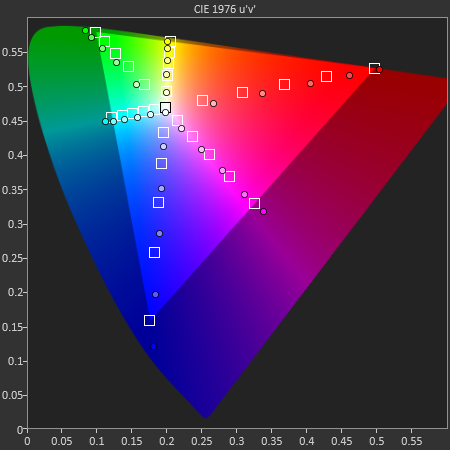 SpectraCal CalMAN
SpectraCal CalMAN
sRGB and Display P3 Targets in "Adaptive"
Now the fun thing is testing what happens with the sRGB and Display P3 images when you’re in “Adaptive” mode. sRGB obviously is quite a disaster – I didn’t manage to match this resulting gamut to any existing standard so there’s no real point in measuring an error rate. Now what is really interesting is to see the CMS expand the resulting visible gamut with the P3 images – here we’re seeing something that is far wider than Display P3, especially in the blues. Again this doesn’t really match any standard gamut, so there’s no point in making direct comparisons.

SpectraCal CalMAN
GretagMacBeth in "Natural"
The GretagMacBeth colour test in natural mode results in accurate colours with a dE2000 of 1.28.
Gamma curves under magnifying glass
One of the reasons I want to switch to full 256 level greyscale testing is to better show case the luminance behaviour, specifically highlighting the issue of “black clipping”.
The Pixel 2 XL, along with the LG V30, suffered very badly from black clipping at low brightness levels. I generally attribute this to the fact that those generation panels just used the DDIC’s ADC bit-depth for both colour representation as well as brightness control. Samsung OLEDs use PWM on top to control brightness by just adjusting the duty level – with voltage of the pixels determining the colour intensity. The Pixel 2 XL and V30 seemed to lack sufficient range to cover the level-spectrum at the low-end, and this resulted in notorious black clipping.
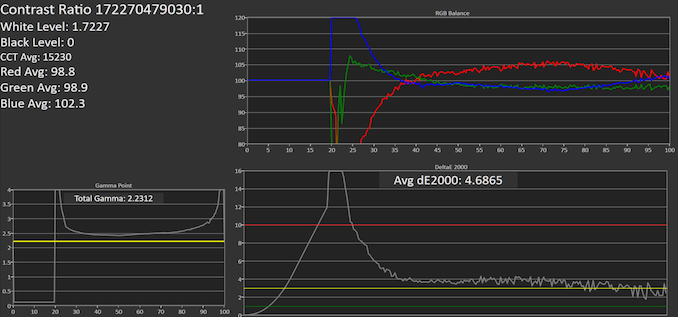
SpectraCal CalMAN
Pixel 2 XL
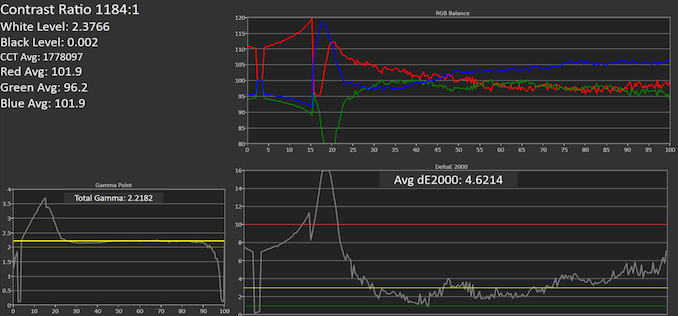 SpectraCal CalMAN
SpectraCal CalMAN
Pixel 3
At minimum brightness, the Pixel 3 improves over the Pixel 2 XL in this regard, but it’s still pretty terrible as it’s clipping 15% of levels to black, as opposed to 25% of the Pixel 2 XL.
The higher the brightness, the less pronounced the issue is. At 200 nits compared across the Pixel 3, Pixel 2 XL, S9+ and an iPhone XS, we see that all of the Android phones are clipping the first few greyscale levels to black, with Apple being the only manufacturer able to perform excellently in this regard.
Also one thing that becomes evident when doing full-scale 256 level measurements is the fact that the Pixel 3 colour balance across levels is very haphazard, and we see quite a zig-zagging behaviour between the intensities at different levels, also represented by the dE2000 results. In absolute terms, this shouldn’t be an issue as overall the error rate is acceptable, however it’s a stark behavioural contrast to any other phone I’ve measured before.
Overall, the Pixel 3’s screen is an improvement over the Pixel 2 XL, however it doesn’t fully solve the low-brightness issues that are plaguing LG’s OLED panels, and Samsung panels such as on the Pixel 2 are still better this this regard.
In terms of colour accuracy, the Pixel 3 performs well. Here I would have hoped that Google would have gotten wide colour gamut support fully working within its applications – currently the only way to get this to work is to change a Chrome settings flag, and this only solves the problem for Chrome, and no other app.
Lastly, the display brightness is good, however again it’s just adequate at up to 400 nits, and fails to compete with super bright displays from competing flagships.


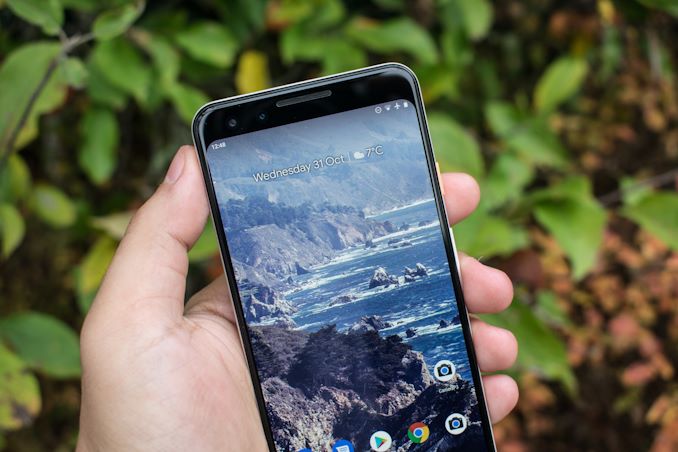
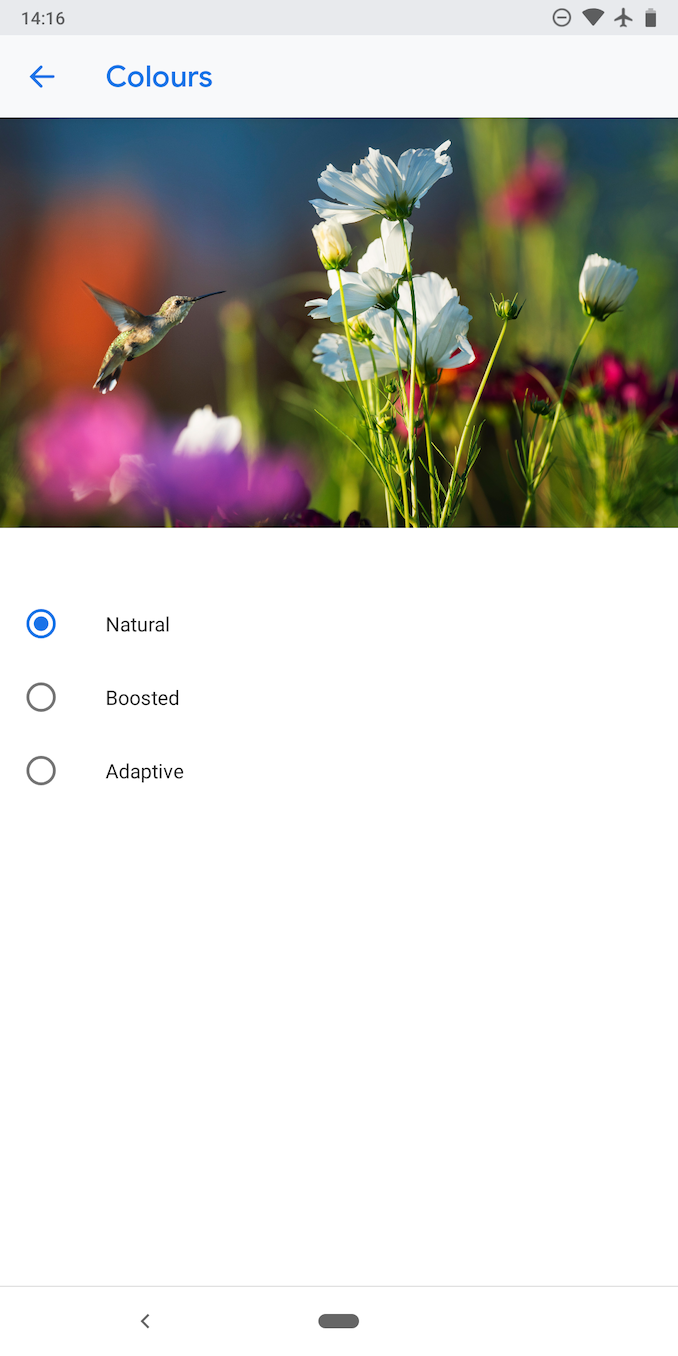
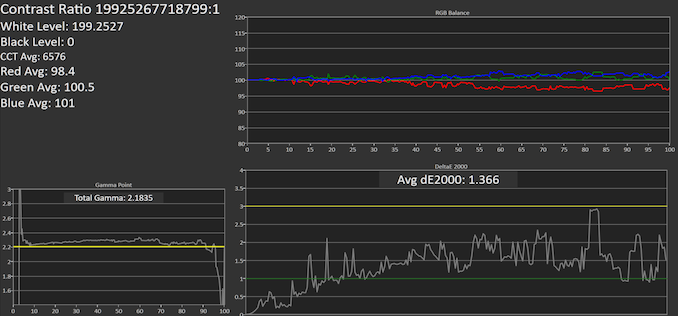

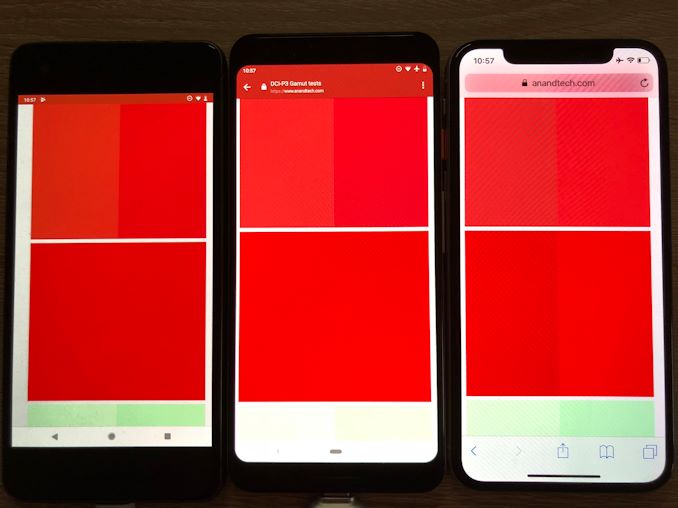
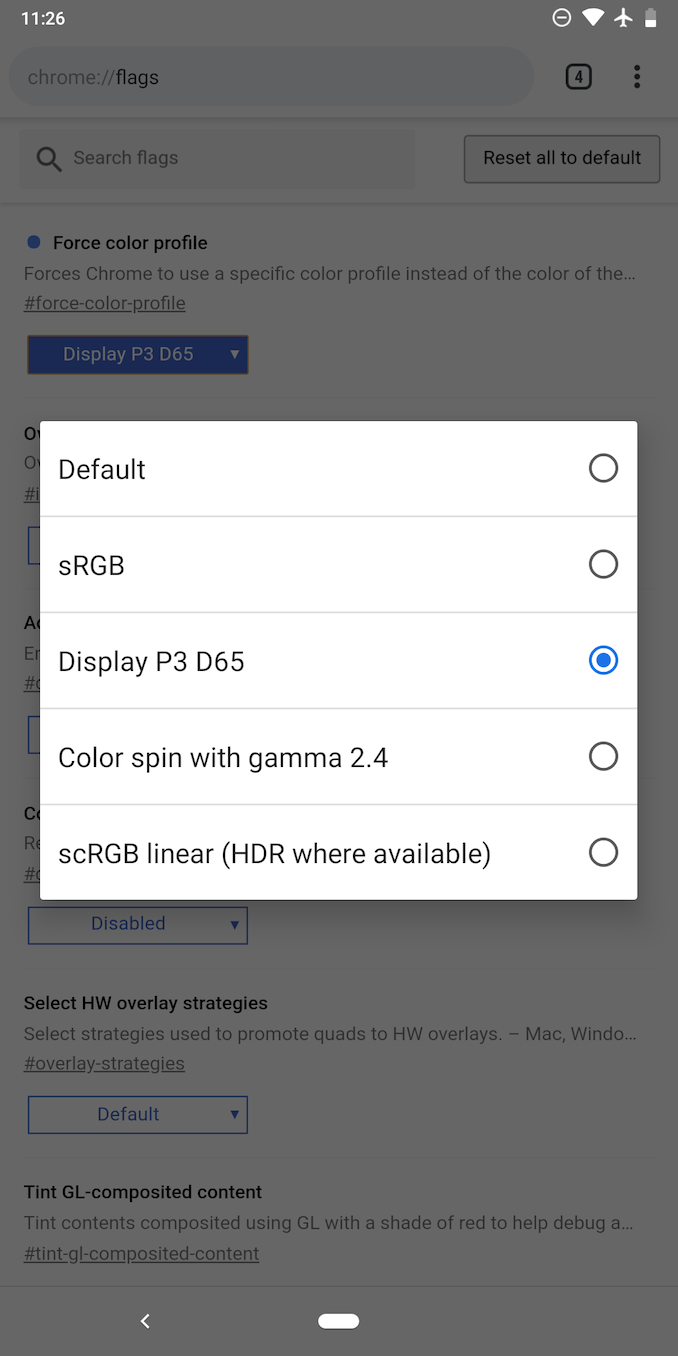









135 Comments
View All Comments
buxe2quec - Sunday, November 4, 2018 - link
When I buy a phone I go to DxO Mobile and from the top ranking I go down until I find a phone within my budget.DxO however is sometimes controversial, so I would like to see a synthetic number from Anandtech, so that I can quickly do the same here as well.
misaki - Sunday, November 4, 2018 - link
The Pixel3 4k EIS video is linked to the Pixel 2 video and the Pixel2 1080p30 is labeled incorrectly.I don't know if it shows up in the original video or if it's a Youtube encoding issue but the unstabilized Pixel 3 4k video retains a lot more detail than both of the the Pixel 2 4k videos, stabilized and unstabilized. I see it plainly without even needing to pixel peep. Pixel 2 video capture had good stabilization but was always disappointing in all other ways and behind other flagship phones. If they at least improved their encoder for the Pixel 3 like what I'm seeing then it's a good start.
cwolf78 - Monday, November 5, 2018 - link
Thanks for the thorough review. One question I have is that there are many other reviewers out there that have praised the included ear buds and even had separate reviews for them they were so impressed. I don't think anyone has claimed the sound quality is top-tier by any means, but they were supposed to sound decent and have excellent Google Assistant support. Just curious if maybe you have a defective set or your standards are unrealistically high?Andrei Frumusanu - Monday, November 5, 2018 - link
I wouldn't say my standards are that high - and *maybe* my units are defective. Compared to any other bundled units they sound as if they're covered by tape and very muffled. A quick frequency response comparison ( https://twitter.com/andreif7/status/10586681768783... and yes I know this isn't an absolute measurement, but a relative one to the Apple ones ) represented what I heard, with insanely weaker mid-ranges.Fluffywings - Monday, November 5, 2018 - link
Hi Andrei,Great review and clearly a lot of effort. As you mention in the camera review, excerpt below, the shadows are darker than should be, which is something I noticed with the Pixel 2 back in 2017. I have found a simple solution that changed how I use my Pixel 2 camera. When setting up the picture, click on a darker area for focus. It will bring up the shadows and the picture will look better than before but with much detail in the shadows. I will take usually 2 pictures, one clicking on the darkest portion of a scene, and the second, clicking on a slighter less darkest portion of the scene.
Can you give it a try and let me know what you think?
"A characteristic of Google’s phones we’ll see throughout the pictures is that the processing likes to darken the shadows more than what the sensor actually sees, and this most visible in the trees in these pictures, as the pines in the middle picture lose a lot of detail compared to any other phone, also something that happens throughout darker objects of the whole scene."
Andrei Frumusanu - Monday, November 5, 2018 - link
I mean, sure, that's a way to do it, but then I'm no longer testing the default capabilities of the phone. I also said this year Samsung overexposes too much in many scenes, and I'm also not going around to adjust that for every shot.Fluffywings - Sunday, November 11, 2018 - link
Makes sense. Most people will use the phone in the same way.s.yu - Thursday, November 15, 2018 - link
I also notice that in my Gcam port to Note8, I set everything to max for maximum IQ but still sometimes shadows drop to pitch black too fast. Switching to the default camera app with the exact same framing I could get a much finer gradient in the shadows.The reason I still use GCam is higher DR in most instances and less noise, less smearing. Also the slight HDR effect applied works better with snapseed's set of adjustment sliders, especially ambience. The default camera works better with LR, snapseed's often a little quirky and counterintuitive.
stacey94 - Monday, November 5, 2018 - link
Great review! I really wanted to see the display results.I don't know that you guys ever test this stuff, but it would be nice to see audio output comparisons between phones for the 3.5mm jack. (As it seems like a lot of digital dongles shipping with phones have lower quality than the Qualcomm DAC built into the phones).
And some level of Bluetooth performance analysis would be helpful, whether that's through LDAC bitrate or signal strength. I know the original Pixel had an "antennagate" problem where touching the band on the top right of the phone would immediately cause BT audio to garble and cut. My Pixel 2 was also hit or miss with several BT devices compared to an iPhone 8.
On another note, is testing the Surface Laptop 2 on the agenda at all? I'm mainly looking to see the color accuracy of the display and find out if they're still using that awful SSD the first gen shipped with.
dgtangman - Monday, November 5, 2018 - link
I'm seeing a very strange behavior with the sample images and would like to know if anyone else has encountered it. If I right-click and select "Open Link in New Window" I get a new window that shows the full-size version of the currently displayed sample the first time I click on the image. If I then pick a different sample the in-page sample image changes and the link name shown when I hover on the sample image changes, but if I right click and open in a new window again I get the same image I saw the first time; the URL displayed in the new window is the same as for the first sample image and is not the URL that was displayed when I right clicked on the sample image. To see a different full-size image from a given set of samples I have to reload that page of the review.Has anyone else seen anything like this? I've been trying to figure out anything that could be wrong on my end to get these results, and I haven't had any luck. I'd like to blame it on my Comcast connection, but I can't figure out how they could accomplish this either.
I've tried this on Firefox 63 with all add-ons disabled and on Chromium 70 with identical results.